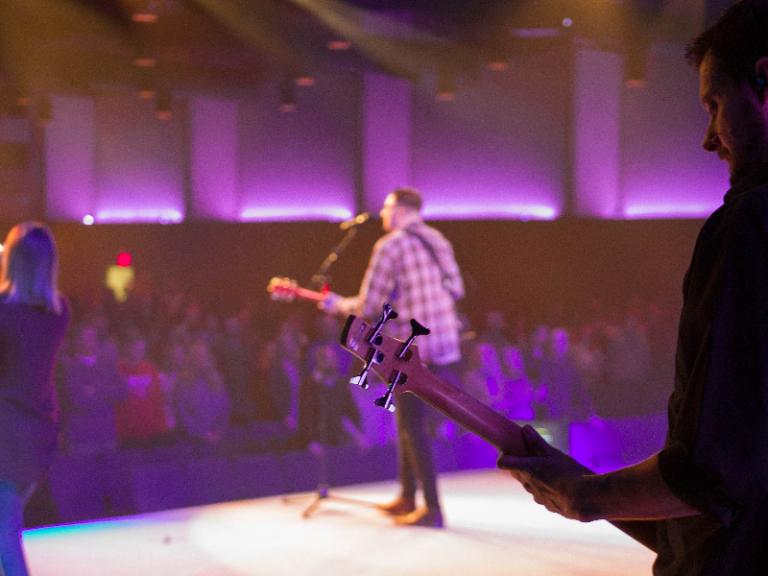Most debates about the music used in contemporary worship focus on the words to the songs. But, contrary to the widely-held assumption that “form doesn’t matter,” just the “content,” the style of the music is also an issue.
Responding to criticism about the lyrics to some contemporary praise songs, composers have written similar songs but with better lyrics. Or even taking the lyrics of traditional hymns and putting them to pop melodies, or even keep the basic traditional melodies but giving them a contemporary arrangement, to be played by a band.
Is there anything wrong with that? No, not as such. But it’s often precisely the style that can be problematic for worship.
It isn’t a criticism of pop music to observe that this style is specifically designed for solo artists, which means that it does not lend itself well to congregational singing. It is also written to be a performance for an audience, which means that it does not lend itself well to corporate worship.
This is not a matter of subjective preference, which style of music one group or another “likes”; rather, these observations refer to objective, necessary characteristics of a style that get in the way of what worship, theologically, needs to be.
So says church musician Jonathan Aigner, a fellow Patheos blogger, in his post Why Singing Hymns the Traditional Way is Better than Singing the Pop Worship Way. The whole post is worth reading, but here is an excerpt:
Pop music is not written to be sung by a congregation. It is not textually driven, which is part of the necessity for a poem set to music to function as a hymn. Even if the text is good and important, the music is driven by a band, usually a constituted rock band, and the vocals are handled either by a soloist or a small ensemble. The singing is done very individualistically, usually with heavy ad libbing, soloistic singing. The singers are generally theatrical, even when they don’t mean to be. It’s the style of music. Your favorite pop singer sings this way, and so when this sort of music is done in church, the singers are theatrical. More technically, and I’m drawing on my own training as a vocalist here, it is technically sung in a high-larynx position, which creates a feeling of emotive singing that, unfortunately, often borders on being either whiny or glib.
If you’re singing a hymn text in this style, you’re not really singing a hymn. You’re singing a pop worship song that happens to use old words. Those words may be good, but they aren’t being done in a style that unifies the congregation. They aren’t being done in a way that emphasizes the text. They’re being performed at an audience, some of whom might be crooning (or, more to the point, emoting) along from their pews or stadium-style seats, but who aren’t being trained in the discipline of singing.
Hymns sung in liturgy are generally accompanied by an organ, which when played well will draw the singing out of a congregation and articulate the rhythm of the text. There is no ad libbing by the singers, either in the choir or congregation, and there is no soloist wailing into a microphone. The point of the exercise is singing together as one voice a strong theological text that complements the liturgical day and lectionary readings. It isn’t to give a good theatrical performance. It isn’t to express emotion toward God, though emotions can certainly be stirred by singing fabulous hymn texts. Stirring up emotions isn’t the point.
“But I am definitely worshipping when I sing those praise songs!” I know, I know. I do not intend to denigrate that experience. In fact, singing praise songs is called worship in many congregations, as in, “first we have a time of worship [meaning “singing”], and then we pray and have a sermon, closing with some more worship.”
Perhaps we could say that this kind of music is conducive for individual worship and thus for a large numbers of individuals worshipping at the same time, but this is not corporate worship, as such, in which diverse individuals–of different ages, backgrounds, musical preferences, and kinds of voices–join together as one communal body to receive God’s gifts. Then again, I acknowledge that some churches do focus on individual religious experiences, so contemporary worship music styles might be in accord with those theologies. But if that is not the intention, the musical style may need to be revised to fit the theology of worship.
Photo: “Worship Leader” via Piqsels.com, CC0, Public Domain














